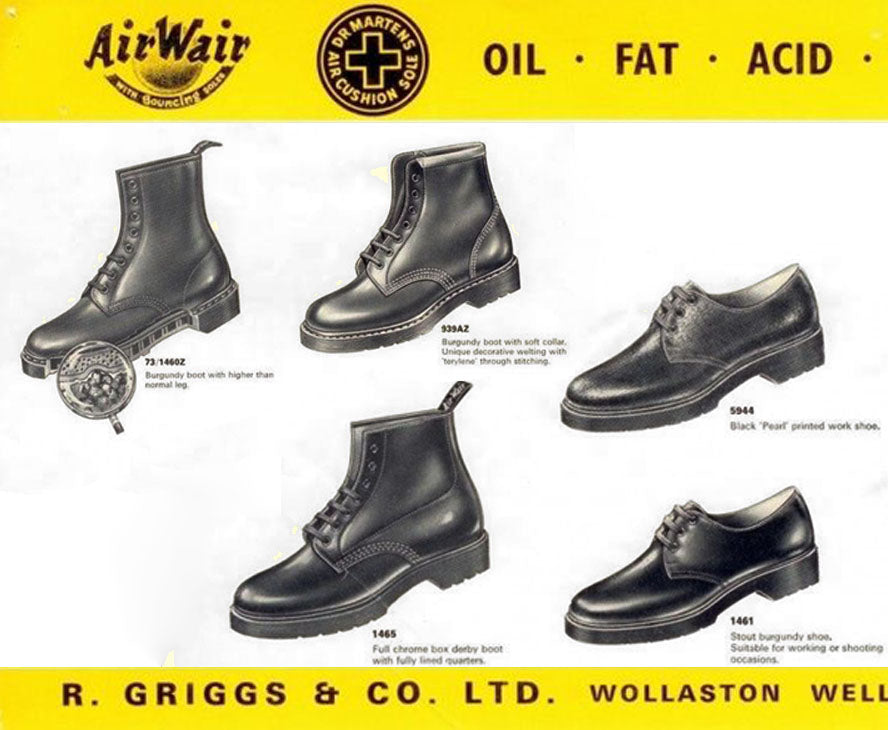The convenience of Dr. Martens shoes are made up of two components - the leather, which adapts perfectly to the shape of your foot, and the patented air-cushioned sole.
Today I would like to show you how this sole has evolved. At first, Dr. Klaus Märtens, a German doctor shortly after the Second World War developed a sturdy shoe that was lighter and softer than the work shoes that were common at the time.
dr Märtens is said to have gotten the idea from his skiing accident because he was hoping for a faster recovery and relief for his feet.
Rubber had not been used in the fashion industry until then, so the soles of the shoes of the time were hard, heavy and thick. Finer leather soles were also sensitive to moisture and stress.
As with many other items of clothing, the need for comfort and suitability for everyday use grew, and functionality was now also demanded of fashion.
Together with his friend Herbert Funck, he turned his ideas into reality and, out of necessity, made shoes out of old soldiers' uniforms and rubber leftovers from the Luftwaffe, which were much more comfortable than was usual at the time and were also a recycled product. I also like the aspect that materials that originally stood for suffering and war were reworked into a product that helped people and made their everyday lives easier.
Interestingly, around the same time English soldiers also brought the original variant of the Creeper from North Africa to London, the soles of which are also made of rubber.
Märtens and Funck opened a factory in 1952 and successfully turned their vision of a comfortable and durable shoe into reality by producing hundreds of different models. So successful that Bill Griggs became aware of the company through an advertisement and bought the production license from them.
Griggs, together with the Solovair company, now introduced the first Dr. Marten's boots, Solovair was responsible for the soles from now on. You can find more about this in the blog entries about Dr. Martens company history.
The unique air chambers and various upholstery still ensure the unmistakable comfort of Docs, which also gave them the name 'bouncing soles'.
The principle of air chambers in an elastic rubber sole was also a pioneer for the emergence of sneakers, so the air cushion soles from Dr. Martens been a milestone!
Incidentally, the soles are still resistant to oil, acid, grease and petrol - even if they are no longer just worn as work shoes!

